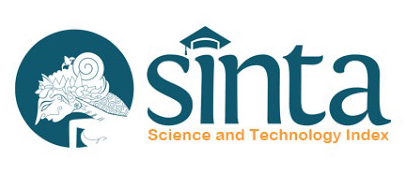EDUKASI BAHAYA SAMPAH PLASTIK KEPADA MASYARAKAT PESISIR DI PANTAI PULOT, KECAMATAN LEUPUNG, KABUPATEN ACEH BESAR
Abstract
Full Text:
PDFReferences
Cole, M., et al., 2011. Microplastics as contaminants in the marine environment: a review. Marine Pollution Bulletin (62): 2588 – 2597.
Derraik, J.G.B., 2002. The pollution of the marine environment by plastic debris: a review. Marine Pollution Bulletin (44): 842 – 852.
Gourmelon, G., 2015. Global plastic production rises, recycling lags. Vital Signs. Diakses melalui vitalsigns.worldwatch.org .
Gregory, M.R., 2009. Environmental implications of plastic debris in marine settings: entanglement, ingestion, smothering, hangers-on, hitch-hiking, and alien invasions. Philosophical Transaction of The Royal Society B: Biological Science (364): 2013 – 2025.
Mattlin, R.H., Cawthorn, M.W., 1986. Marine debris – an international problem. New Zealand Environment (51): 3 – 6.
Purwiningsih, D. W., & Ishak, D. A. (2016). Gambaran Perilaku Masyarakat dalam Membuang Sampah Rumah Tangga di Wilayah Pesisir Rt 03/Rw 01 Kelurahan Kasturian Kecamatan Ternate Utara Tahun 2015. Jurnal Kesehatan, 9(1), 1–5.
Sartika, R. E. A. (2017, Desember 20). Makin Mengerikan, Tiap Tahun 1.000 Penyu Mati akibat Sampah Plastik. KOMPAS, hal. 1. Diambil dari https://sains.kompas.com/read/2017/12/20/170000423/makin-mengerikan-tiap-tahun-1.000-penyu-mati-akibat-sampah-plastik?page=all
Soerjani, M., Kostermans, A. J. G. H., & Tjitrosoepomo, G. (1987). Weeds of Rice in Indonesia. Jakarta: Balai Pustaka.
Thompson, et al., 2009. Plastics, the environment and human health, current consensus, and future trends. Philosophical Transaction of The Royal Society B: Biological Science (364): 1973 – 1976.
Yasinta, V. (2018, Juni 2). No Tirle Telan 80 Kantong Plastik Seekor Paus Mati di Pesisir Thailand. KOMPAS. hal.1. Diambil dari https://internasional kompas.com/read/ 2018/06/03/1520221/telan-80-kantongplastik-seekor-paus-mati-di-pesisirthailand
DOI: https://doi.org/10.35308/jmk.v6i1.5533
DOI (PDF): https://doi.org/10.35308/jmk.v6i1.5533.g2890
Refbacks
- There are currently no refbacks.

This work is licensed under a Creative Commons Attribution-ShareAlike 4.0 International License.









